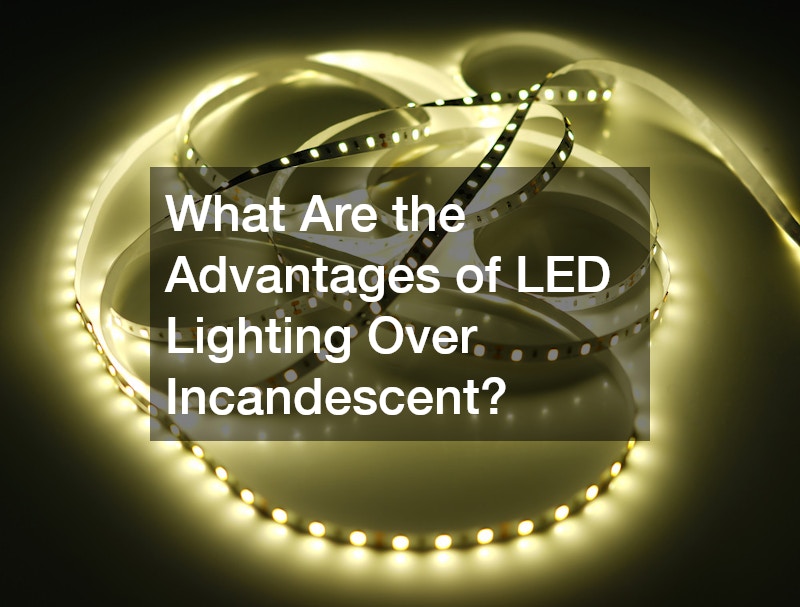The evolution of lighting technology has transformed the way we illuminate our homes, workplaces and public spaces. For many decades, incandescent bulbs dominated the market. However, with the growing demand for energy-efficient, cost-effective and environmentally friendly solutions, LED lighting has become the preferred choice across Australia and the globe. The advantages of LED lighting over incandescent bulbs are numerous, ranging from efficiency and longevity to safety and environmental impact.
Energy Efficiency & Cost Savings
One of the most significant benefits of LED lighting is its remarkable energy efficiency. Incandescent bulbs work by heating a filament until it glows, a process that converts a large portion of energy into heat rather than visible light. In contrast, LEDs emit light through electroluminescence, which is a far more efficient method. On average, LED bulbs use up to 80% less electricity than their incandescent counterparts to produce the same amount of light.
This efficiency translates into substantial cost savings for consumers. While LED lights may have a higher upfront price, the reduction in electricity bills over time more than compensates for the initial expense. Households and businesses that switch to LED lighting often notice a significant decrease in energy costs, particularly in areas where lighting is used for extended periods. Given the ever-increasing focus on reducing energy consumption, especially in Australian homes looking to lower carbon footprints, LEDs represent a smart and responsible investment.
Longevity & Durability
Another area where LED lighting outperforms incandescent options is in lifespan. Incandescent bulbs typically last around 1,000 hours, whereas LEDs can last anywhere between 15,000 and 50,000 hours, depending on the quality and usage. This extended lifespan means fewer replacements are required, which is both convenient and economical.
The durability of LED lights also adds to their value. Unlike incandescent bulbs, which are prone to breakage due to their delicate glass construction and fragile filaments, LEDs are built with solid-state components. They are less susceptible to damage from vibrations, shocks and external impacts. This makes them ideal for use in various settings, including outdoor areas, industrial facilities and transport vehicles.
Environmental Benefits
LED lighting also offers substantial environmental advantages over traditional incandescent bulbs. The lower energy consumption of LEDs directly reduces greenhouse gas emissions, especially when powered by electricity generated from fossil fuels. With climate change being a pressing concern in Australia and around the world, choosing energy-efficient lighting solutions can play a part in reducing one’s environmental impact.
Additionally, LEDs do not contain hazardous materials such as mercury, which is present in some other lighting options like compact fluorescent lamps (CFLs). Their extended lifespan also means less waste is generated over time. By using fewer resources for manufacturing, packaging and transportation, LED lighting contributes to more sustainable consumption patterns and supports broader environmental goals.
Enhanced Light Quality & Versatility
The quality of light produced by LED lighting is generally superior to that of incandescent bulbs. LEDs are available in a wide range of colour temperatures, from warm whites to cool daylight tones, allowing users to create specific atmospheres suited to their needs. This versatility is particularly beneficial in interior design, retail settings and hospitality venues, where lighting plays a key role in creating ambience.
LEDs also offer instant illumination with no warm-up time, unlike some traditional bulbs. They can be dimmed easily and controlled with smart technology, giving users greater flexibility over their lighting preferences. In addition, LEDs produce directional light, which means they can focus light exactly where it’s needed without relying on reflectors or diffusers. This makes them ideal for task lighting, spotlights and accent lighting.
Improved Safety Features
Safety is another important factor to consider when comparing LED lighting with incandescent bulbs. Since incandescent lights operate at much higher temperatures, they pose a greater risk of burns or fire, particularly if they come into contact with flammable materials. LEDs, on the other hand, remain cool to the touch even after prolonged use. This significantly reduces the risk of accidents and makes LEDs a safer choice for households with children or pets.
Moreover, LEDs are less likely to fail suddenly. Incandescent bulbs often burn out abruptly, while LEDs typically dim gradually at the end of their life, providing a clear indication that replacement is needed. This characteristic enhances reliability, especially in critical applications such as emergency lighting or medical settings.
Long-Term Value & Modern Appeal
The modern appeal of LED lighting extends beyond its technical benefits. With sleek designs and compact forms, LED fixtures suit a wide range of architectural styles and décor themes. Whether in residential renovations or new commercial developments, LEDs offer a contemporary aesthetic that complements current design trends.
Their long-term value is also evident in reduced maintenance costs, lower replacement frequency and ongoing energy savings. For Australian consumers and businesses aiming to balance performance, sustainability and economy, LED lighting clearly presents a forward-thinking solution.
In comparing LED lighting with incandescent bulbs, it becomes clear that LEDs hold a decisive edge in nearly every category. As awareness around sustainability and cost-effectiveness continues to grow, more Australians are making the switch to LED lighting. It is not just a smart move—it is an essential step toward a brighter, greener future.
.

